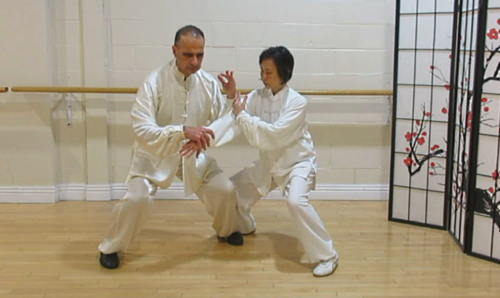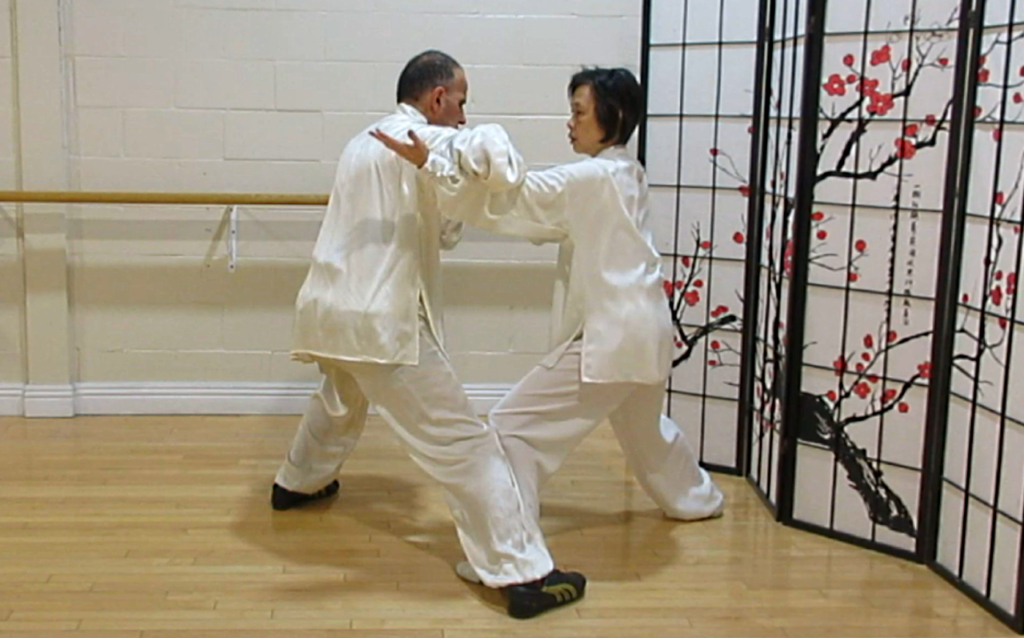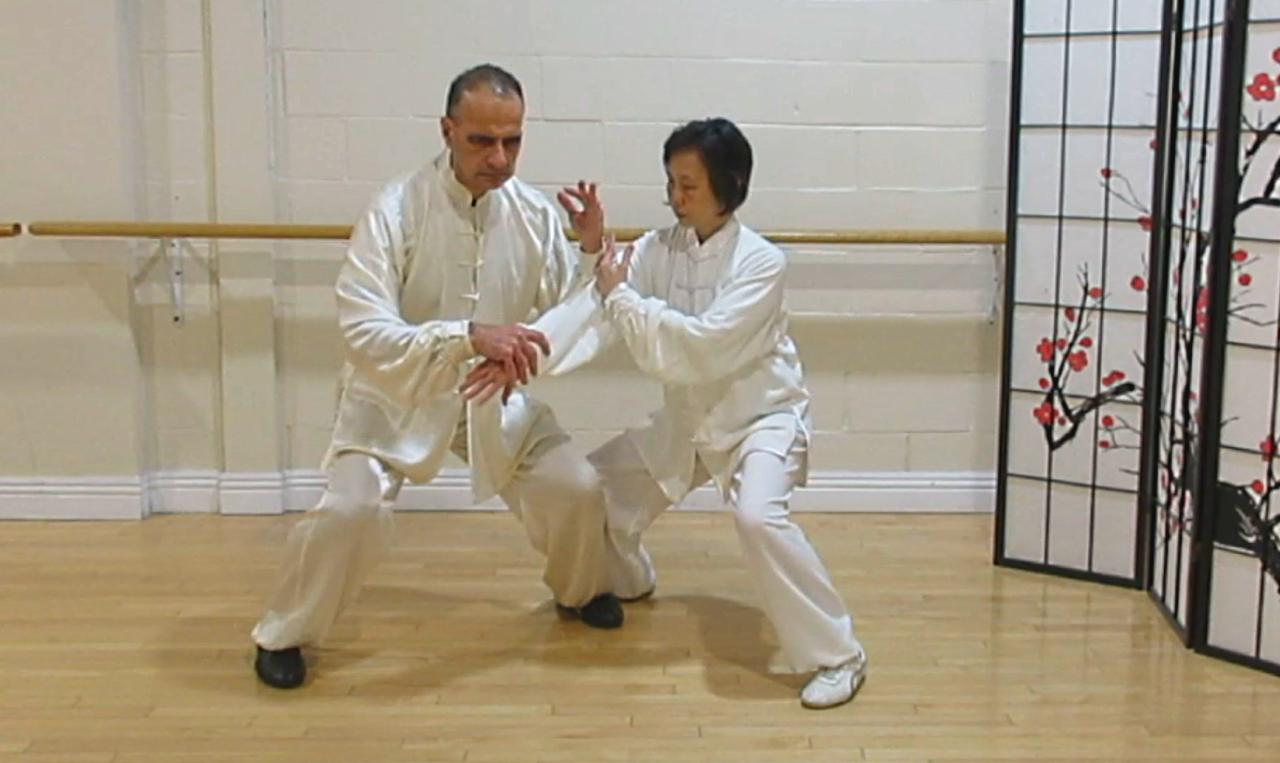There are many variations of the Chen Style double hands push pattern, but the basic structure and stance remains the same. The two partners face each other at a 90 degree angle, forming an L shape with their stances. Both arms and one leg are in contact with the partner at all times, both sides shift, turn and maneuver to lock or destabilize each other in a continuous cycle.
The close proximity of your partner in this exercise requires precision in the movements to successfully navigate the pattern without losing the flow or your own balance. Therefore it is one of the harder patterns to execute well.
Chen Style Double Hands Push
The Chen style single hand push pattern requires keeping centred at all times in a horse stance. While the double hands push pattern requires continuous transition between the left and right bow stances, as the partners try to match each other’s weight shifting.
Beginning Stance
- With your partner ready in a horse stance, hook your right foot to your partner’s left foot from the back. Then proceed to position yourself into a horse stance facing your partner at a 90 degree angle.
- Extend your right arm in front angled slightly downwards with the palm facing down, place your left hand above your right elbow with the palm facing inwards. Your partner places the right hand on top of your right wrist, and the back of the left forearm on your right arm just above the elbow.
Basic Movement Pattern
- Your partner grips your right hand, turns his/her body to the right, twisting your hand inwards and locking your right arm by applying pressure forward with the left forearm.
- You continue the flow by turning your body to the right and circling your arm around to the back of your partner’s arm connecting above the elbow.
- Turn to the left, guiding your partner’s arm with you. Grip your partner’s left hand, twisting it inwards and locking your partner’s arm by applying pressure forward using the back of your right forearm.
- Your partner continues the flow by circling the left hand around to the back of your right arm while turning the body to the left.
- Repeat from Step 1.
The Chen Style double hands push pattern is an intricate mix of attack and defense techniques that flow seamlessly from one to another. To learn this pattern well, you have to keep the Five Bows structure intact and apply Silk Reeling force to all five bows. With this in mind; we now proceed with the following enhancements.
Enhanced Movement Pattern
- Switching steps: As your partner is about to execute the moves in Step 1, step back 90 degrees with your right foot, using your right hand, counter grip your partner’s right hand and pull back with your step; place the back of your left forearm above your partner’s right elbow. Your partner follows you by stepping forward, hooking his/her right foot behind your left foot. You and your partner have now switched places; continue with the basic movement pattern from Step 1.
- Improving connection of the arm bows: At Step 4, when circling your arm around, keep in contact with your partner’s arm, do not completely disconnect. At Step 8, when it is your partner’s turn to circle the arm, do not prematurely move your arm, wait for your partner to initiate the movement; keep your elbow down and just follow your partner.
- Improving connection of the leg bows: Do not shift away from your partner prematurely; wait for your partner to shift towards you first and you follow. Similarly, when it is time for you to counter-attack, shift your weight towards your partner first before applying the technique. This will help keep each other’s leg bows connected.

Applying Principles
There are a few key advanced principles that we can learn from this exercise. Maintaining the Five Bows structure is the most obvious one. To achieve this requirement, observe and pay attention to the positioning of your elbows and shoulders, and ensure that your main bow is always straight and never twisted.
The next principle to work on is Whole Body Coordinated as One. The spiral rotation of each move begins from the Dantian, then the hips turn, followed by the shoulders, elbows and finally hands. Focus your attention on your lower body, do not be too quick to grab, pull or push with your hands. Be patient and wait for your lower body to initiate and then your upper body can continue to finish the movement.
The last principle and probably the most physically tiring one is Sinking. Focus your weight down to a single point on the ground, this single point moves and shifts as you transition between the bow stances, it must always be present and is the anchor that keeps you stable and balanced.
This partner exercise is extremely effective in helping us correct the flaws in our understanding and application of these key principles, at the same time providing a very good workout.



